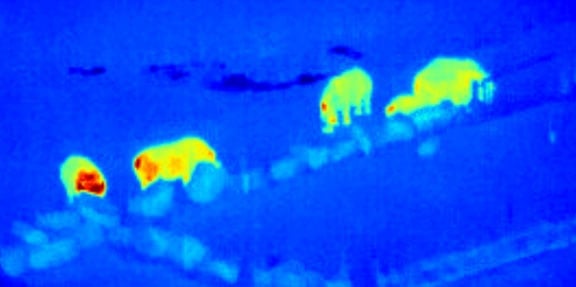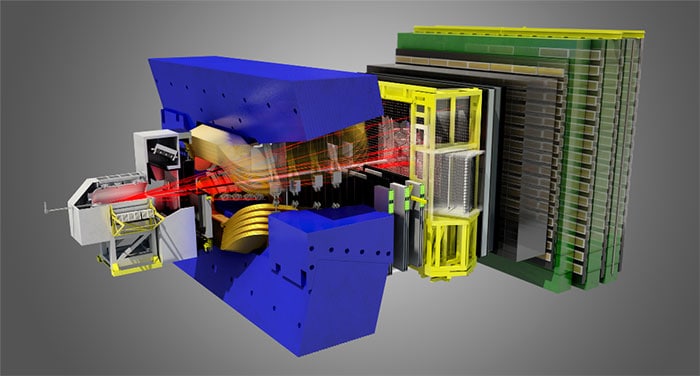Flash Physics is our daily pick of the latest need-to-know developments from the global physics community selected by Physics World‘s team of editors and reporters

Astronomers help conservationists detect animal heat
A conservation drone has been enhanced by astronomy techniques. An international group of scientists, led by Steven Longmore of Liverpool John Moores University in the UK, has combined an unmanned aerial system with a thermal-infrared camera and astronomical detection software. Monitoring species distribution and density is a challenge for conservation research. Surveys are usually done on foot, by manned aircraft or using satellite images, all of which are expensive and labour intensive. Furthermore, the commonly used visible-light cameras have limited use because they can only be used in daylight and often require manual analysis as different objects have the same brightness. To get around these problems Longmore and colleagues combined unmanned drones with thermal-infrared cameras. The pairing makes it easy to perform aerial surveys detecting the heat signatures of animals and humans. However, current data-analysis tools for infrared systems are not adequate for such large quantities of data. The researchers therefore applied methods used by astronomers. Astronomers are used to looking at vast quantities of data for distant objects that appear faint and small; their techniques are ideal for species monitoring. The work, described in the International Journal of Remote Sensing, combines the astronomical detection software with machine learning algorithms in a proof-of-concept study. By building a library of heat profiles unique to each species, conservationists hope to spot population changes. The scientists also aim to apply the technique to disaster relief and search and rescue.
Quark production at LHCb defies theory

A study of the production of b quarks at the Large Hadron Collider (LHC) at CERN suggests that more b quarks are being produced by 13 TeV proton–proton collisions than predicted by theoretical calculations. The measurements were made by physicists working on the LHCb experiment on the LHC, who compared b-quark production during 13 TeV and 7 TeV collisions. They found that at relatively low values of pseudorapidity (a measure of the angle between the direction of the proton beams and the momentum of the detected particle), about 66% more b quarks were produced by 13 TeV collisions than calculated by the “fixed order plus next-to-leading log” (FONLL) framework for predicting the production of heavy quarks. The excess has a statistical significance of 5σ, which counts as a discovery in particle physics. However, FONLL was able to predict b-quark production at 7 TeV, and the discrepancy at higher energy could point researchers to new physics beyond the Standard Model of particle physics. The study is described in Physical Review Letters.
New electron microscope makes movies of molecular rotation

A new 4D electron microscope can acquire a series of nanometre-resolution images of tiny gold nanoparticles with nanosecond time resolution. Developed by researchers at Caltech in the US, the instrument has been used to make movies of gold dimers – comprising two gold nanoparticles measuring about 60–90 nm – as the dimers rotate in an aqueous solution. Jau Tang and colleagues used the microscope to study the rotation of dimers made from two same-sized nanoparticles and found the rotation process to be diffusive. However, when one of the nanoparticles is slightly larger than its partner, the rotation becomes “super diffusive” and as the size asymmetry becomes larger, the rotation becomes ballistic in nature. Writing in Science, the researchers say the 4D microscope should provide important insights into how nanocrystals and biological molecules behave in aqueous environments.
- You can find all our daily Flash Physics posts in the website’s news section, as well as on Twitter and Facebook using #FlashPhysics. Tune in to physicsworld.com later today to read today’s extensive news story on a new source of electrical energy.



